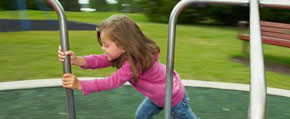We are pleased to announce an exciting new alliance between Active Living Research and GP RED to co-host and coordinate...
Life Stage and Sex Specificity in Relationships between the Built and Socioeconomic Environments and Physical Activity
Boone-Heinonen, J., & Gordon-Larsen, P. (2011). Life Stage and Sex Specificity in Relationships between the Built and Socioeconomic Environments and Physical Activity. Journal of Epidemiology and Community Health, 65(10), 847.
BACKGROUND: In the largely cross-sectional literature, built environment characteristics such as walkability and recreation centres are variably related to physical activity. Subgroup-specific effects could help explain inconsistent findings, yet few studies have compared built environment associations by key characteristics such as sex or life stage. METHODS: Using data from the National Longitudinal Study of Adolescent Health (wave I 1994-5, wave III 2001-2; n=12,701) and a linked geographic information system, cross-sectional relationships between moderate to vigorous physical activity (MVPA) bouts and built and socioeconomic environment measures were estimated. Negative binomial generalised estimating equation regression modelled MVPA as a function of log-transformed environment measures, controlling for individual sociodemographics and testing for interactions with sex and life stage (waves I and III, when respondents were adolescents and young adults, respectively). RESULTS: Higher landscape diversity (coefficient 0.040; 95% CI 0.019 to 0.062) and lower crime (coefficient 0.047; 95% CI 0.071 to 0.022) were related to greater weekly MVPA regardless of sex or life stage. Higher street connectivity was marginally related to lower MVPA (coefficient 0.176; 95% CI 0.357 to 0.005) in females but not males. Pay facilities and public facilities per 10,000 population and median household income were unrelated to MVPA. CONCLUSIONS: Similar relationships between higher MVPA and higher landscape diversity and lower crime rate across sex and life stage suggest that application of these environment features may benefit broad populations. Sex-specific associations for street connectivity may partly account for the variation in findings across studies and have implications for targeting physical activity promotion strategies.
Related Tools & Resources
STAY UP TO DATE
RECENTLY ADDED TOOLS & RESOURCES
MOVE! A BLOG ABOUT ACTIVE LIVING
The "Active Living Conference" aims to break down research and practice silos and...







